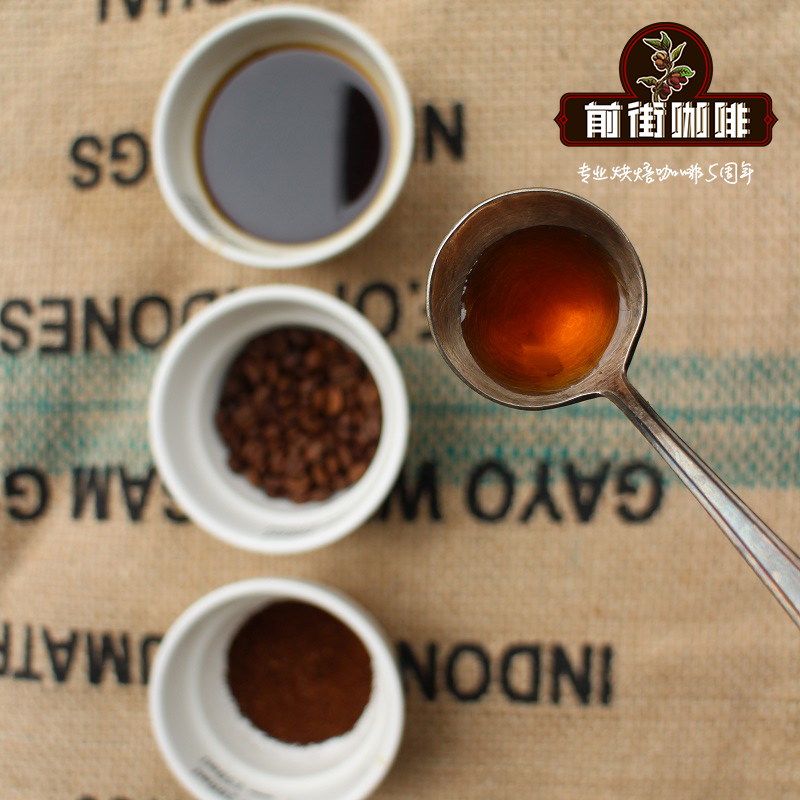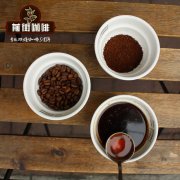The category of sour coffee, coffee is a little sour, why is coffee sour? The role of sour coffee

Professional coffee knowledge exchange more coffee bean information please follow the coffee workshop (Wechat official account cafe_style)
Wait, I'm drinking a fake cup of coffee?
"well... Cranberries with a very prominent orange acid. And red wine flavor. " The barista on my right marked his notebook.
"mm-hmm, it smells bright orange, but more like an orange?" A barista on my left also entered the conversation.
I bravely pretended to understand and put forward my own opinion: "Yes, I think it's citrus, too!"
But seriously, what are these people talking about?! This thing is obviously just a little sour coffee! Is there something wrong with my taste?
That's how I first tried the cup test seven years ago.
Like everyone else, I thought the Wheel of Flavor was too difficult to decipher at that time. To me, this coffee is just coffee. Although some are sour and some are bitter, they all smell like coffee.
How can a face-saving person like me stay in the superficial stage of nodding and agreeing, pretending to do my homework, so I decided to study hard to understand the acid in coffee from a scientific point of view.
Here are my gains, which I hope will be useful to you, too.
✎ warning ahead, do not enter if you have bad teeth.
We learned in junior high school chemistry class that acid is a chemical substance characterized by sour taste. The PH value of its aqueous solution is less than 7. The lower the PH value is, the higher the acidity is.
Many foods contain acid, such as lemon, vinegar, yogurt and, of course, coffee. In coffee alone, there are more than a hundred acid compounds, including citric acid that we are familiar with and 4-monocaffeoylquinic acid that we don't know what kind of acid it is.
Here, I will only talk about the acid that will affect the taste.
▧ citric acid (just reading makes you feel sour in the mouth. )
Citric acid, as its name suggests, is found in citrus fruits. In fact, citric acid accounts for about 8% of the total weight of such fruits. Citric acid is undoubtedly the most common acid in fruits and vegetables and the most easily identified acid.
▧ malic acid (begins to secrete saliva … )
The taste of malic acid is close to that of green apples, you will be in rhubarb (this is not a dog's name! Rhubarb is commonly used in traditional Chinese medicine, and the purest malic acid is found in Europe and the United States.
In the culinary world, malic acid is usually associated with lime and is easily reminiscent of "unripe fruit". This acidity decreases as the fruit ripens. So most green fruits and vegetables, such as green fruit, kiwi fruit, currant and so on, contain malic acid.
▧ tartaric acid (facial nerve twitch ING... )
Tartaric acid is usually associated with grapes because of its high content in grapes, but it is not only found in grapes. Salt and potassium hydrogen tartrate (tower powder) are automatically produced in the wine-making process and are usually used as yeast.
The most special thing about tartaric acid is its taste. It makes people secrete a lot of saliva and has a bitter aftertaste. Tartaric acid is the main ingredient of the super-hard and sour sugar we loved when we were kids.
▧ acetic acid (spin and jump I close my eyes. )
Acetic acid is very strong, not only tastes sour, but also smells pungent vinegar. Low concentrations of acetic acid give off a pleasant smell of lime, and when the concentration is high, it smells like fermented taste.
This sour taste is paired with other flavors (especially sweetness) to bring the flavor of wine and champagne.
The PH that ✎ has not seen for a long time is worth the king.
By now, you should have a general idea of several different acids and their flavors, but what does this have to do with the orange flavor of your coffee?
The easiest way to understand acidity is to think of it as an abstract concept. Just because coffee has the acidity of an orange does not mean that drinking it is like eating an orange, but it can be understood as "as sour as an orange".
If you think about it in this way, you will find that the flavor description is starting to become more interesting.
Just as blueberries are definitely sour than lemons, coffee as sour as blueberries will undoubtedly be less acidic than coffee as sour as lemons.
To illustrate this example, I made a chart that corresponds common fruits to PH values one by one.
How to judge flavor by PH value of ✎
In these PH ranges, you will find that some fruits have similar PH values, but they taste completely different, such as apples and oranges. Why?
The main acids in apples and oranges are different. Apples are mainly made up of malic acid, while oranges are mostly citric acid.
Imagine a shallow-baked African bean, boiled and shown to have a PH of 4.6. corresponding to the PH table are grapes, peaches, plums, pineapples and so on. Then you will realize that the astringency left in your mouth is caused by tartaric acid. You can define that the coffee has the "acidity of a grape or cherry", which combines with fermented acetic acid and gives you wine-like acidity.
Similarly, citrus flavor with lower PH value can be defined as "citric acid", while citrus flavor with higher PH value is more similar to orange flavor. Malic acid with a lower PH value is similar to the taste of lime, while malic acid with a higher PH value is like the acid in rhubarb, green apple and grapefruit.
Once you understand all this, the cup test becomes much easier. Stop making things up and figure it out.
The way to cultivate taste buds in ✎
Trying different flavors is a good way to help you practice your cup testing skills, and trying a variety of sour flavors can make you more sensitive to sour taste.
I have bought different kinds of pure acids and diluted them with distilled water into a solution of 1% Murray and 2%.
When you know the taste of pure acid, you can start to try the acid in the food, prepare some fruit, vinegar or wine, and try what kind of acid they mainly contain.
Once you have mastered the meaning of sour, you will get the skills of cup testing, which can help you learn more about coffee and make your coffee more interesting.
It is better to be a sour person than to be jealous.
Important Notice :
前街咖啡 FrontStreet Coffee has moved to new addredd:
FrontStreet Coffee Address: 315,Donghua East Road,GuangZhou
Tel:020 38364473
- Prev

Why is the coffee sour? Is the coffee sour or bitter? Is the coffee a little sour?
Professional coffee knowledge exchange more coffee bean information Please follow the coffee workshop (Wechat official account cafe_style) Coffee with a little sour, it will make this cup of coffee feel sweeter and more layered! And the higher the altitude, the sour taste of coffee beans will be more obvious, although it can be modified by baking to modify the sour taste, but it is a pity. Very
- Next

The coffee tastes sour. Why? Is the coffee sour or bitter? The relationship between baking degree and sour taste
Professional coffee knowledge exchange more coffee bean information please follow the coffee workshop (Wechat official account cafe_style) pleasant sour coffee most people mistakenly think that coffee is not fresh will have sour taste, in fact, coffee itself is an acidic drink, whether coffee is sour or not depends on the variety and baking degree of beans, the longer the baking time, the higher the degree of caramelization, and the acid is destroyed.
Related
- Beginners will see the "Coffee pull flower" guide!
- What is the difference between ice blog purified milk and ordinary milk coffee?
- Why is the Philippines the largest producer of crops in Liberia?
- For coffee extraction, should the fine powder be retained?
- How does extracted espresso fill pressed powder? How much strength does it take to press the powder?
- How to make jasmine cold extract coffee? Is the jasmine + latte good?
- Will this little toy really make the coffee taste better? How does Lily Drip affect coffee extraction?
- Will the action of slapping the filter cup also affect coffee extraction?
- What's the difference between powder-to-water ratio and powder-to-liquid ratio?
- What is the Ethiopian local species? What does it have to do with Heirloom native species?

